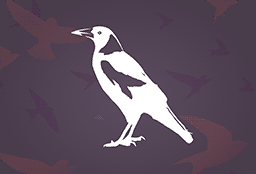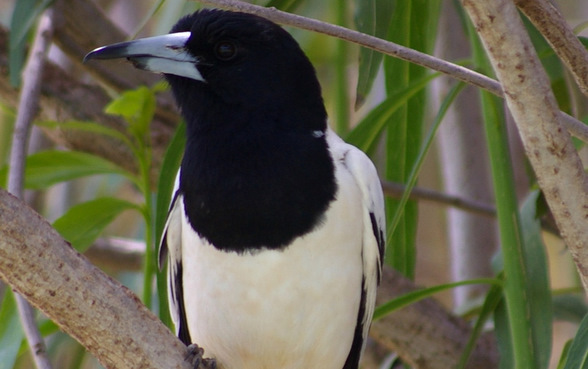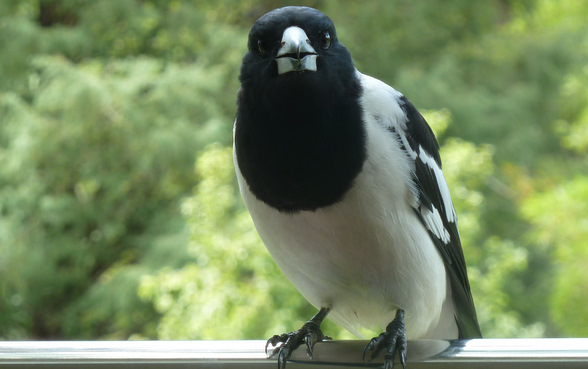Size
36 – 44 cm long (from head to tail), with an average wing span of 76 cm
Behaviour
Call
A carolling, flute-like song, often calling together.
Diet
Small insects and animals that live on, or just under, the surface of the ground, including grasshoppers, scarab beetles, insect larvae, frogs and small lizards. During the day it walks along jabbing its beak into the ground, searching for food.
Flight
Swift, strong and direct, sometimes in flocks of several hundred birds.
Breeding
It is extremely territorial during the four to six weeks of the breeding season. The female usually selects a nest site, which is either high up a tree, on a power pole or on the roof of a building. The nest is a rough basket of sticks, twigs, plant stems and occasionally wire, lined with softer materials such as wool, hair, grass, feathers and shredded bark. The female lays between one and six eggs, which are either blue or green with brown blotching, and she sits on them for 20 days. She then feeds her young until they are about four weeks old, when they are ready to fly and leave the nest.
Field Guide
Improve your identification skills. Download your Pied Butcherbird field guide here!




